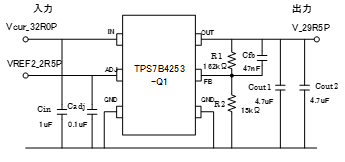Other Parts Discussed in Thread: TPS7B4253EVM
Hi team,
My customer will employ TPS7B4253 and he provided a question.
His question is "What is acceptable capacitor value between out-pin and fb pin?"
My customer is designing refer to Figure.25(please see below figure).
It shows just 47uF seems to be for phase compensation.
Is it possible to change that value to 0.1uF?
or is there any tool to simulate TPS7B4253 stability?
I'm looking forward to hearing back from you.
Best regards,
Shota Mago


